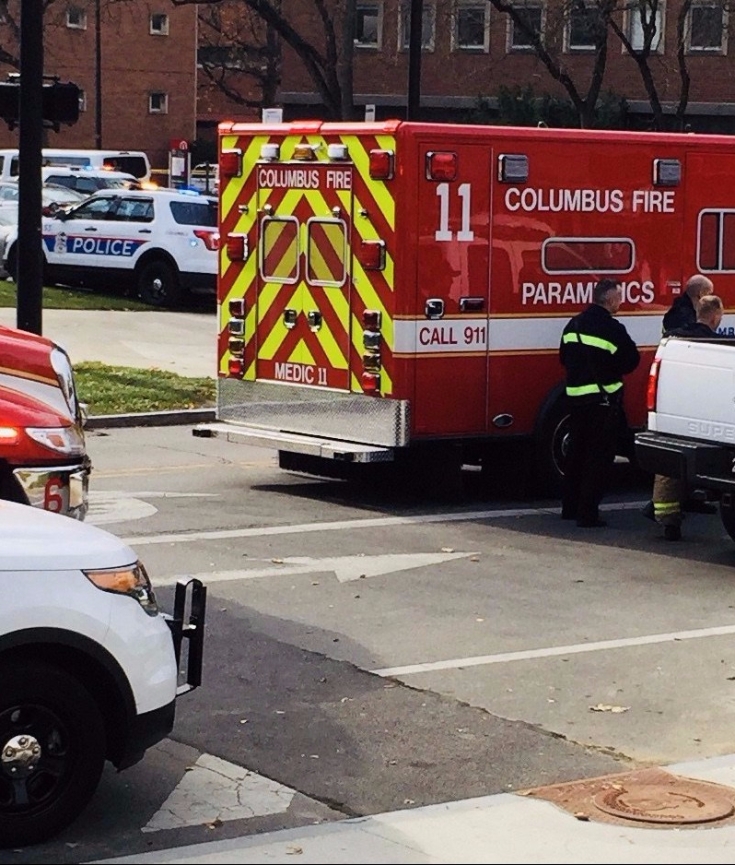On November 28, 2016, 18 year old Abdul Razak Ali Artan initiated an attack against the students and faculty of The Ohio State University. The attack was calculated, leaving 13 people injured. Within one minute, Artan was fatally shot by OSU police, thus ending the threat to campus safety.
Following the attack, officials released known information about the perpetrator. As Artan’s name was released, identifying him as a Muslim, Somali refugee, his label immediately shifted from suspect to terrorist. Officials began to investigate Artan’s motive for what was deemed an act of terror, and initially looked for any known communication between the student and ISIS.
While no communication was confirmed, investigators discovered that Artan was very outspoken about his disdain towards the global mistreatment of Muslims by the United States, as well as the media’s negative representation of Islam. In an interview done by The Lantern for their Humans of Ohio State feature, Artan had stated that “[he] wanted to pray in the open, but [he] was scared with everything going on in the media.” Artan explained, “I don’t know what they’re going to think, what’s going to happen. But, I don’t blame them. It’s the media that put that picture in their heads…”
On personal social media accounts, Artan made several posts discussing his contempt for the abuse towards Muslim communities. In one particular post made prior to the attack, Artan stated that he was “sick and tired of seeing [his] Muslim brothers and sisters being killed and tortured…” He later asked the United States to not involve themselves with affairs in the Middle East, and threatened that the oppressed would retaliate unless given peace.
As information regarding Artan’s background and political beliefs began to surface, media outlets pointed to radical Islam as the culprit for the events that ensued. Many celebrated that the Somali refugee was fatally shot, as pictures of his dead body were spread throughout social media, and many expressed gratitude that ‘the terrorist had been defeated.’
OSU’s Assistant Director of Residence Life Stephanie Clemons Thompson expressed a more compassionate attitude toward the student. Through a Facebook post titled “DO NOT REPOST,” Thompson urged people not to share the photo of Artan’s body in celebration, but rather show compassion to an 18 year old boy who felt his circumstances offered no alternative outlet. However, Thompson’s post was responded with severe backlash. Many pushed for her termination, as outcries were made against the university for allowing leadership to ‘justify and defend the acts of a terrorist.’
A similar harsh reaction towards the humanization of Artan was received by the Ohio State Coalition of Black Liberation. The protest group held a rally in order to identify and name off black individuals shot down by police, reading off Artan’s name. The group was faced with accusations of condoning the student’s attack against the university, despite having acknowledged during the event that the student’s name was not added in support of his actions, but rather as part of a statement against the systematic killing of black people by police, regardless of criminality status.
The outrage against comments humanizing Artan is largely a result of the media’s label of the student as ‘terrorist.’ A term consistently reserved for Muslims by the media, the ease with which it is used has an incredibly dangerous and powerful effect on both Muslims and non-Muslims. In Artan’s situation, the term terrorist stripped him of his identity as a peer, a student, and a human, and reduced him to his actions that morning. By labeling him a terrorist, we refuse to acknowledge his humanity and thus fail to recognize the root of his mistakes, ultimately failing to understand how this tragedy can be prevented. Artan is an example of the toxic and dangerous impact Islamophobia has on not only the Muslim community as a whole, but at the internal level of practicing Muslims.
At the root of it, Islamophobia is a political agenda designed to promote the United States’s exploitation and involvement in the Middle East through global dehumanization of Muslims. When random acts of violence are carried out by Muslims, the media coverage emphasizes that these ‘terrorist attacks’ were motivated by ‘radical Islam.’ Thus, random acts of violence become an Islamic problem, rather than isolated events. These terms make it easier to dehumanize Muslims as a community, and using the term radical Islam essentially paints each Muslim as a potential terrorist. Any form of humanization is reserved for criminals with lighter skin tones.
While Islamophobia has toxic effects on the community as a whole, the internal impact it has on Muslims is rarely addressed. Artan continuously expressed anger towards the mistreatment of Muslims, and evidently felt he had to retaliate and defend his culture through violence. The blatant hatred and general disregard for Muslims is so ingrained in our society that it can become extremely isolating to those on the receiving end. Artan’s case is a tragic example of how Islamophobia and the discrimination and marginalization of Muslims can drive those who strongly identify with their culture and beliefs to commit unacceptable crimes driven by a common fear of abuse.
Rather than celebrate Artan’s death, as a country we must learn from this tragic event, as well as events similar to Artan’s. We must learn the circumstances and mistakes made to push an 18 year old student, afraid of what his religious and cultural identity meant for him and his community, to a defensive and homicidal behavior. The term radical Islam must be obsolete. The definition of terrorism and the media’s exclusive use of the term against Muslims must be redefined, and the effects and toxicity of Islamophobia should be acknowledged and thoroughly understood. In a political climate where Muslims are constantly attacked, targeted, and dehumanized, both in the states and in the Middle East, it is important for those not a part of the community to become allies to the marginalized. Discrimination due to religion and race does not come without a certain level of trauma, and it is now more crucial than ever to educate and empathize, to ally oneself with those who suffer from systemic discrimination, and to ensure that no peer, regardless of religious affiliation or cultural background, is left feeling isolated, targeted, and stripped of their freedom to simply exist.
-Rana Hegazi

